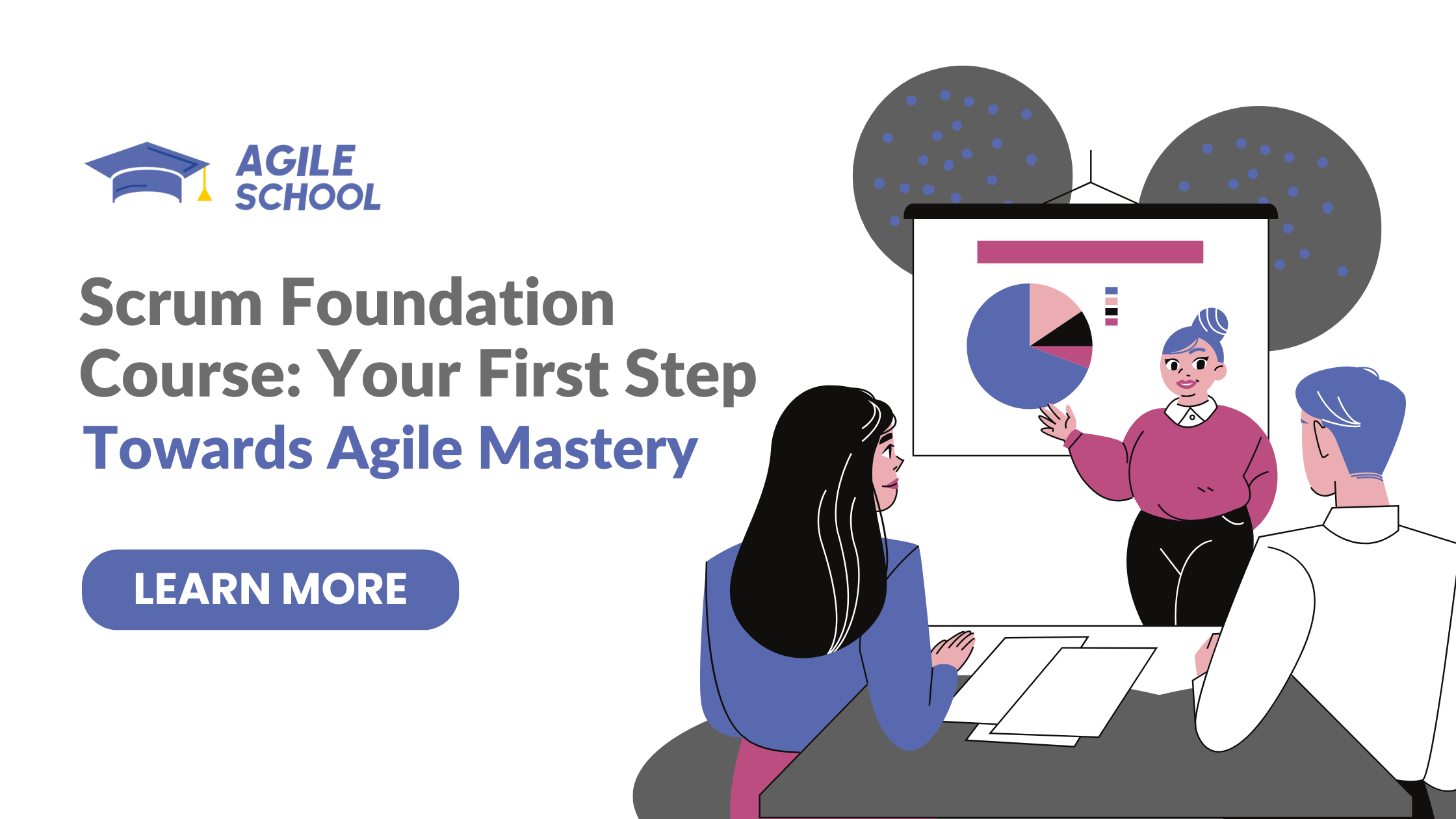Scrum Foundation Course: Your First Step Towards Agile Mastery
Introduction
In today’s fast-paced and ever-evolving work environment, businesses and teams need methodologies that foster adaptability, collaboration, and continuous improvement. Agile, a methodology that emphasizes flexibility and customer satisfaction, has become a cornerstone in project management. Within Agile, Scrum stands out as a popular framework that helps teams work more efficiently and deliver higher value to customers. This article will explore the Scrum Foundation Course, which serves as an essential stepping stone for anyone aiming to master Agile principles and practices.
What is Scrum?
Scrum is an Agile framework designed to help teams tackle complex projects by promoting collaboration, accountability, and iterative progress. Originally conceived in the early 1990s by Jeff Sutherland and Ken Schwaber, Scrum has evolved to become a leading methodology in software development and beyond. Its simplicity and effectiveness in managing projects of varying complexity have made it a favorite among many organizations.
Why Choose Scrum?
Choosing Scrum brings numerous advantages. Teams that implement Scrum often see improved productivity, better-quality products, and enhanced team morale. Companies like Google, Spotify, and Microsoft have reported significant successes after adopting Scrum. These success stories underscore the transformative potential of Scrum in achieving project goals more effectively.
Understanding the Scrum Framework
Scrum Roles
- Product Owner: Responsible for maximizing the value of the product by managing the Product Backlog.
- Scrum Master: Ensures the team adheres to Scrum practices and removes any impediments to progress.
- Development Team: A self-organizing group responsible for delivering increments of the product.
Scrum Events
- Sprint Planning: A meeting to plan the upcoming sprint.
- Daily Scrum: A short daily meeting for the team to synchronize activities and plan for the next 24 hours.
- Sprint Review: A session to inspect the increment and adapt the Product Backlog if needed.
- Sprint Retrospective: A meeting to reflect on the past sprint and identify improvements for the next one.
Scrum Artifacts
- Product Backlog: A prioritized list of work for the team, maintained by the Product Owner.
- Sprint Backlog: A list of tasks to be completed during the sprint.
- Increment: The sum of all completed Product Backlog items at the end of a sprint.
The Basics of a Scrum Foundation Course
Course Objectives
A Scrum Foundation Course aims to provide participants with a solid understanding of Scrum principles and practices, equipping them with the skills needed to effectively participate in a Scrum team.
Target Audience
This course is ideal for project managers, software developers, product managers, and anyone interested in Agile methodologies.
Prerequisites
While there are no strict prerequisites, having a basic understanding of project management concepts can be beneficial.
Key Topics Covered in a Scrum Foundation Course
Participants can expect to delve into:
- Introduction to Agile Principles: Understanding the core values and principles of Agile.
- Detailed Study of Scrum Framework: Comprehensive coverage of Scrum roles, events, and artifacts.
- Practical Applications of Scrum: Real-world scenarios and case studies to illustrate Scrum in action.
Benefits of Taking a Scrum Foundation Course
Professional Growth
Gaining Scrum certification can enhance your career prospects by showcasing your expertise in Agile practices.
Enhanced Team Collaboration
Scrum promotes transparency and communication, leading to stronger team dynamics and collaboration.
Improved Project Outcomes
Teams that practice Scrum often deliver higher-quality products more efficiently.
How to Choose the Right Scrum Foundation Course
Accreditation and Certification
Ensure the course is accredited by a recognized body like Scrum.org or the Scrum Alliance.
Course Content and Structure
Look for comprehensive coverage of Scrum fundamentals and practical applications.
Instructor Expertise
Choose courses led by experienced instructors with real-world Scrum experience.
Preparing for the Scrum Foundation Course
Pre-course Reading Materials
Familiarize yourself with the Scrum Guide and Agile principles to get a head start.
Recommended Tools and Software
Having tools like JIRA or Trello can help you understand Scrum practices better.
During the Scrum Foundation Course
What to Expect
Interactive sessions, group activities, and hands-on simulations will be part of the learning process.
Hands-on Activities and Simulations
Practical exercises will help you apply Scrum concepts in real-world scenarios.
After Completing the Scrum Foundation Course
Certification Process
Most courses conclude with a certification exam to validate your knowledge.
Applying Scrum in Real Projects
You’ll be ready to implement Scrum in your projects, leading to better outcomes.
Common Challenges in Learning Scrum
Overcoming Resistance to Change
Transitioning to Scrum can be challenging; it’s crucial to manage change effectively within your team.
Adapting Scrum to Different Environments
Every organization is unique; adapt Scrum practices to fit your specific context.
Tips for Success in Scrum
Continuous Learning and Improvement
Stay updated with the latest Scrum practices and continuously seek improvement.
Engaging with the Scrum Community
Join forums, attend meetups, and participate in Scrum communities to share experiences and learn from others.
Conclusion
Embarking on a Scrum Foundation Course is a strategic move towards mastering Agile practices. Whether you’re a project manager, developer, or simply someone interested in improving team collaboration, this course provides the knowledge and tools you need to succeed. With Scrum, you’ll be better equipped to handle complex projects and deliver exceptional results.
FAQs
What is the difference between Scrum and Agile? Agile is a set of principles for software development, while Scrum is a specific framework used to implement Agile.
How long does it take to complete a Scrum Foundation Course? Most courses can be completed within a few days, although the certification process may take a bit longer.
Do I need any prior experience to take a Scrum Foundation Course? No prior experience is required, but a basic understanding of project management can be helpful.
How recognized is the Scrum certification in the industry? Scrum certification is highly regarded and recognized globally across various industries.
Can I take the Scrum Foundation Course online? Yes, many accredited organizations offer online Scrum Foundation Courses that you can take at your convenience.






